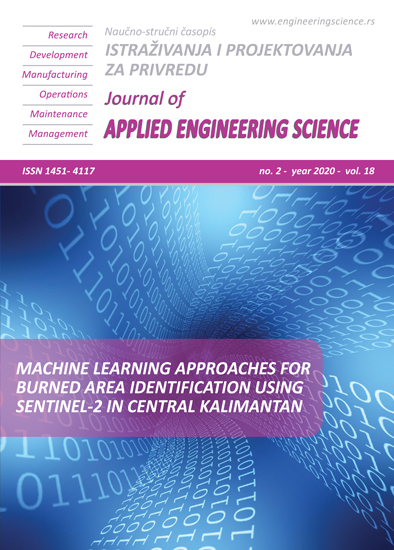MODELING OF PROPERTY MANAGEMENT PROCESS AT TERRITORIAL LEVEL
Abstract
The multivariance of problem-solving techniques of organizing real estate management in the investment and construction complex at the territorial level objectively leads to the need to develop a model designed for the rational resolution of “tension nodes”. Such a model can be the methods and tools of designing management technology, or rather one of its areas - technology for solving situational management problems.The article deals with the methodological problems of real estate management technology from the perspective of situational planning; it provides an analysis of the basic principles for the development of technological solutions to management problems and it gives the authoring details.
References
2. Bredikhin V.V. [2012]. Analysis of existing methods for solving the problem of reproduction of residential real estate objects. Kursk. p.112.
3. Bredikhin V.V., Shleenko A.V., Bredikhina N.V. [2016]. Development of production and technical potential of the region's construction industry. Kursk. p.114.
4. Kamenskikh, N.A. [2018].Regional management and territorial planning: strategic partnership in the system of regional development. Moscow. p. 407.
5. Schedler A. Mapping contingency. In: I.Shapiro, S. Bedi (Eds.). [2007]. Political contingency: studying the unexpected, the accidental, and the unforeseen, NewYork, p. 56.
6. Webb G., Chevreau F. [2006]. Planning to improvise: the importance of creativity and flexibility in crisis response. International Journal of Emergency Management, vol. 3, 1. p. 68.
7. Zub A.T. [2017]. Situational planning as a tool for crisis management. Economy and management of national economy6(151), 25-29.
8. Merkulova, YU. V. [2015]. Situational and strategic planning in the economy. Simulation of optimal strategies and programmes. Moscow, p.464.
9. Bredikhin V.V. [2016]. Strategy for the development of residential real estate in the region. Region: systems, economics, management,3(34), 51-57.
10. Bredikhin V.V. [2013].Methodology for the formation and development of the total production and technical potential of the city and region. Kursk, p.122.
11. Bredikhina N.V. [2017]. Basic principles of production-and-technical potential capacity formation in the construction industry of region. Journal of Applied Engineering Science.- 15(4), 495-497.
12. Yezhov, V.S., Semicheva, N.E., Pakhomova, E.G., Bredikhina, N.V., Emmanuel, S. [2019]. To the question of improving energy-saving and environmental characteristics of urban buildings. Journal of Applied Engineering Science, 17(4), 550-554.
13. Vladimir Ezhov, Natalya Semicheva, Valeria Kretova, Vasily Amelin. [2015]. Enhancement of Reliability and Efficiency of Heat Recovery of Off Gases and Ventilation Discharge. Procedia Engineering 117, 94-101.

